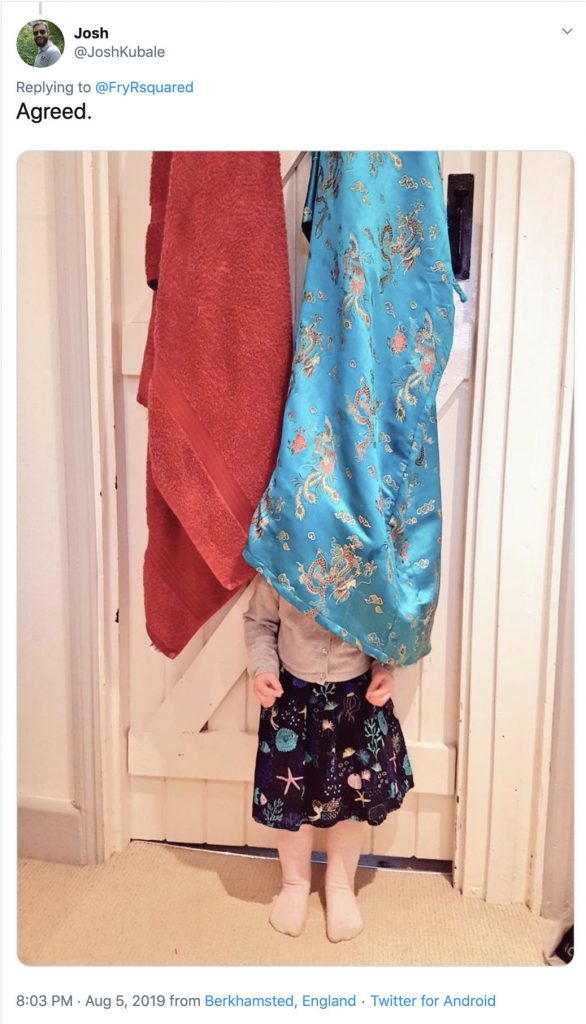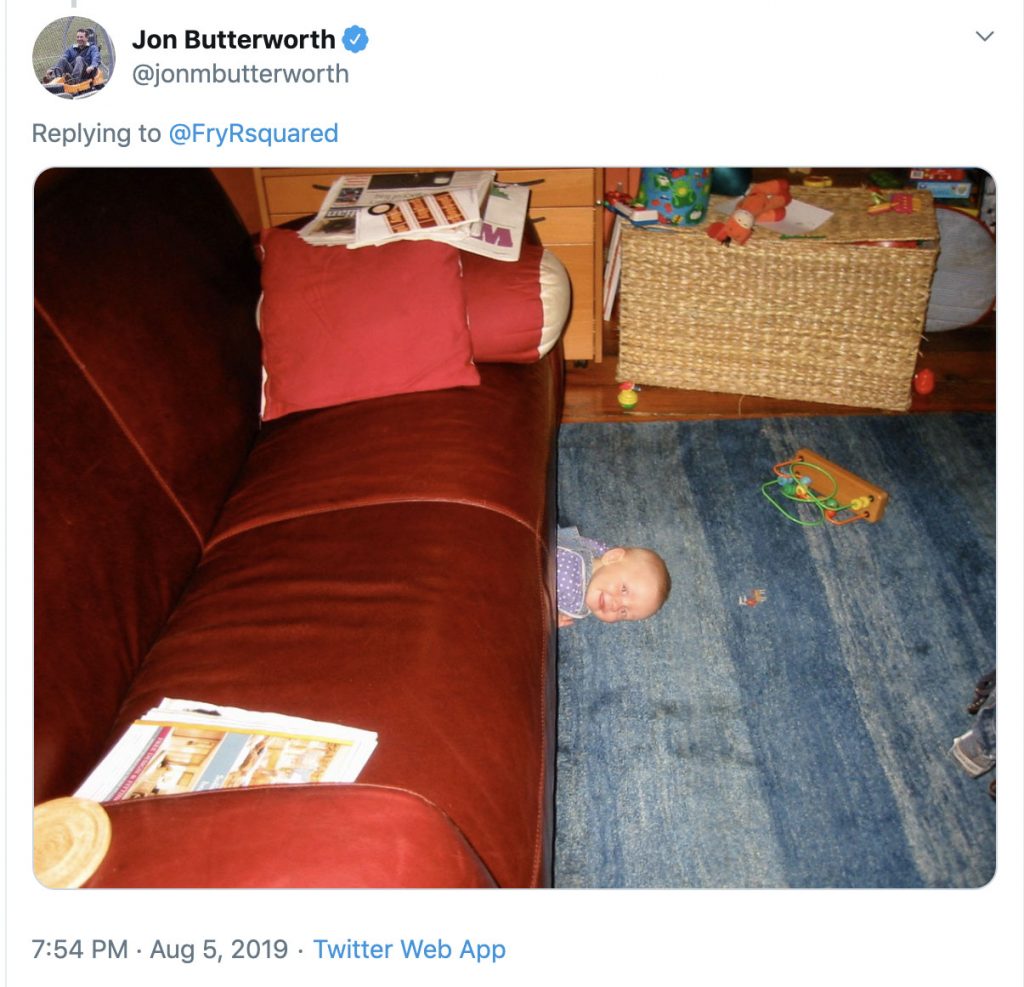Hide and Seek
An Inquiring Mind by Ginny SmithThings on the internet can be a bit shit, and it seems even more so recently. So when something both hilarious and wholesome appears, I think we should grab it with both hands to make our world seem a bit brighter.

And that’s exactly what happened recently when Hannah Fry tweeted a photo of just how bad her toddler is at hide and seek. This started a thread with, at last count, 160 replies- most of which are from parents with their own examples of terrible hiding places their kids chose.

But while it is, of course, highly amusing to see a small child gleefully sure they will never be discovered hiding under a transparent glass table, it also tells us something interesting about the developing brain. In fact, a lot of the games we play with small children are actually training tools, helping them to learn about the way the world works.
Take peekaboo, for example. To anyone over the age of 2, it is about as boring a game as you can think of. But babies love it. Why? According to one of the most influential names in infant research, Piaget, the idea of object permanence only develops at around 8 months- before then, babies think objects stop existing when they can’t see them. Hide a rattle under a blanket, for example, and they won’t reach for it. Studies using other methods have thrown some doubt on the exact age at which object permanence develops, but either way, it seems to be something infants have to learn. So a baby who hasn’t yet fully understood the concept might think the person they’re playing peek-a-boo with was actually appearing and disappearing in front of their eyes- no wonder they are transfixed!

Another ability that takes even longer to develop is ‘Theory of Mind’. This is the understanding that not only do other people have thoughts, experiences, desires and feelings, but that these are different from one’s own. An important part of this is ‘Perspective Taking’. A range of tasks have shown that young children have difficulty seeing the world from a perspective other than their own- for example understanding that if you see a scene from a different angle or at a different time it may appear different. In one classic test, children see a doll called Sally put a marble in a basket, before leaving the room. Another doll, Ann, moves the marble to a box, whilst Sally is away. Sally returns, and the children are asked where she will look for her marble. Before around 4 years of age, they say she will look in the box. The theory goes that this is because they are unable to comprehend some one else having different knowledge and beliefs to their own.
The Cosmic Shambles Network relies on your support on pledges via Patreon so we can continue to provide great, new, exciting content without the need for third party ads or paywalls.
For as little as $1 a month you can support what we do and get some great rewards for doing so as well. Click the Patreon logo to pledge or find out more.
So could this be the issue a lot of these children are having? It’s possible they think because they can’t see anything when their eyes are hidden by a leaf, you must not be able to see them. That they haven’t grasped that what the seeker is experiencing is different from their own experiences- something often termed an ‘egocentric’ viewpoint.
Maybe- but recent research has thrown doubt on this idea. A study at the University of Southern California put 3-4 year olds in a room with an adult, who then covered her own eyes with her hands. When asked, the children said that they could no longer see the adult- despite the fact that she was seated right in front of them! Similarly, they claimed they couldn’t hear a person whose ears were covered, and they couldn’t talk to someone who was covering their mouth.

This is really surprising- the kids were somehow able to ignore their own experiences, and genuinely seemed to believe that an individual whose eyes are covered becomes invisible. The researchers argue that this shows the important of reciprocity to young children- they believe that you only really see someone if you make eye contact with them. So if a child covers their head with a blanket, they become invisible, but equally, if you do it, you become invisible- so it’s not egocentric after all. I still can’t explain the glass table though….
References
https://www.tandfonline.com/doi/full/10.1080/15248372.2016.1243116
https://www.sciencedirect.com/science/article/pii/S0732118X10000267?via%3Dihub
 Ginny Smith is a science presenter and writer. A Natural Sciences and Psychology graduate of Cambridge, Ginny performs science shows all over the world and presents a wide range of science content for the likes of the Cosmic Shambles Network and the Naked Scientists. She is the co-author of three DK Publishing books looking at science, food and the human body. She is @GinnyFBSmith on Twitter.
Ginny Smith is a science presenter and writer. A Natural Sciences and Psychology graduate of Cambridge, Ginny performs science shows all over the world and presents a wide range of science content for the likes of the Cosmic Shambles Network and the Naked Scientists. She is the co-author of three DK Publishing books looking at science, food and the human body. She is @GinnyFBSmith on Twitter.
If you would like to reuse this content please contact us for details
Subscribe to The Cosmic Shambles Network Mailing list here.
The Cosmic Shambles Network relies on your support on pledges via Patreon so we can continue to provide great, new, exciting content without the need for third party ads or paywalls.
For as little as $1 a month you can support what we do and get some great rewards for doing so as well. Click the Patreon logo to pledge or find out more.


Come on scientists! Sort this out! I mean, if you can’t work out how 2 year olds think, how can you solve the mysteries of the Universe?